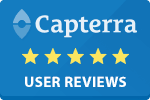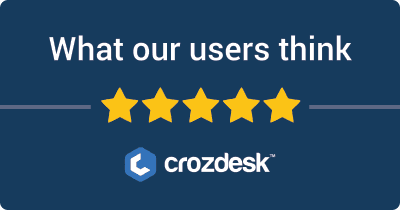
Introduction: Comparing Similarweb and Crayon as Competitor Analysis Tools
In the realm of competitor analysis, Similarweb and Crayon stand out as two popular tools, each serving distinct purposes. Similarweb is primarily designed to provide comprehensive insights into website traffic, audience demographics, and market trends, making it a go-to choice for understanding competitor online presence. In contrast, Crayon focuses on tracking competitors’ digital footprints across various channels, offering insights into their marketing strategies, product changes, and customer engagement.
Users often gravitate towards these tools due to their ability to deliver actionable intelligence, enabling businesses to make informed decisions and strategize effectively.
Key Comparison Aspects
-
Features:
- Similarweb offers traffic analytics, competitive benchmarking, and audience insights.
- Crayon specializes in real-time tracking of competitors’ web activity, marketing materials, and product updates.
-
Pricing:
- Both tools offer tiered pricing models, but Similarweb’s plans can be more expensive due to its extensive data insights whereas Crayon provides flexible options tailored for varying business needs.
-
Ease of Use:
- Similarweb is praised for its user-friendly interface and intuitive navigation.
- Crayon also boasts a straightforward design but may require a learning curve for users to fully leverage its tracking capabilities.
These comparison aspects will assist users in determining which tool aligns best with their competitor analysis needs.
Similarweb VS Crayon: Which tool is the most popular?
| Tool | Number of Reviews | Average Rating | Positive Reviews | Neutral Reviews | Negative Reviews |
|---|---|---|---|---|---|
| Similarweb | 34 | 2.38 | 12 | 1 | 21 |
| Crayon | 14 | 4.71 | 14 | 0 | 0 |
Crayon is the most popular tool based on average user ratings, with a strong rating of 4.71 and all reviews being positive. Similarweb, on the other hand, is the least popular, showing a significantly lower average rating of 2.38, with the majority of reviews being negative.


Similarweb and Crayon: Quick Comparison Overview
| Feature/Aspect | Ahrefs | SEMrush |
|---|---|---|
| Primary Features | – Site Explorer – Keyword Explorer – Backlink Checker – Content Explorer – Rank Tracker |
– Keyword Research – Site Audit – Position Tracking – Content Analyzer – Marketing Insights |
| Target Audience | – SEO professionals – Digital marketers – Agencies focusing on content marketing and backlink analysis |
– Digital marketers – SEO experts – Content marketers – Social media marketers and PPC specialists |
| Main Advantages | – Robust backlink analysis – Comprehensive keyword data – Intuitive user interface – Constantly updated index |
– All-in-one digital marketing tool – Extensive competitor analysis – Wide array of tools for SEO and PPC – Integrated social media management |
| Core Value Proposition | Focused on providing in-depth SEO insights, particularly strengths in backlink profiles and organic keyword rankings. Ideal for users prioritizing content strategy and link-building efforts. | Offers a holistic view of digital marketing, making it easier to manage all aspects of online presence through an extensive range of tools for SEO, PPC, and social media marketing. |
| Ideal Use Cases | – Conducting comprehensive link audits – Developing effective content strategies – Tracking backlinks and organic rankings – Keyword planning for SEO campaigns |
– Managing and optimizing PPC campaigns – Conducting competitive analysis for market positioning – Comprehensive content analytics and SEO tracking – Social media metrics and management |
Most liked vs most disliked features of Similarweb and Crayon
| Similarweb | Crayon | |
|---|---|---|
| Most Liked Features | – Valuable insights and analytics for market and competitor understanding. | – Simple and efficient for creating battlecards and using templates. |
| – Seamless user experience with easy navigation. | – Exceptional customer support that is responsive and helpful. | |
| – Helpful customer support team noted for their responsiveness. | – Real-time competitor analysis and daily notifications keep users updated. | |
| – Positive feedback on the Chrome extension enhancing user capabilities. | – Powerful tool for monitoring competitors and sharing insights with teams. | |
| – Essential tool for competitor analysis and market monitoring. | – User feedback welcomed for future development, showing adaptability. | |
| Most Disliked Features | – Perceived expense of the service, with some users citing it as costly. | – Challenges in getting internal team engagement with field intelligence. |
| – Requests for additional features to improve engagement and interaction. | ||
| – Some users desire more guidance for fully leveraging product features. | ||
| – Success relies on user engagement, which some find challenging within their organizations. |
Key Features of Similarweb vs Crayon
Certainly! Below are the key features of "Similarweb" and "Crayon," two popular competitor analysis tools, along with how each feature benefits users and the unique aspects of each brand.
Similarweb
-
Website Traffic Analysis
- Benefit: Provides insights into traffic sources, visitor engagement, and audience demographics, enabling users to understand overall website performance.
- Unique Aspect: Offers "Traffic Sources" breakdown, categorizing traffic into direct, referral, social, paid, and organic segments.
-
Competitor Benchmarking
- Benefit: Allows users to compare their website metrics against competitors, helping to identify strengths and weaknesses in strategy.
- Unique Aspect: The capability to benchmark against multiple competitors at once presents a comprehensive overview in one glance.
-
Industry Analysis
- Benefit: Users can analyze market trends, compare market share, and identify key players within a particular industry.
- Unique Aspect: Provides categorized insights into various industries, offering a broader understanding of market dynamics.
-
Keyword Analysis
- Benefit: Users can discover which keywords drive traffic to their site and those of competitors, enhancing SEO and paid search strategies.
- Unique Aspect: Offers insights into PPC keywords alongside organic performance, providing a holistic view of SEM.
-
Audience Insights
- Benefit: Reveals audience interests and behaviors, enabling tailored marketing strategies to attract the right users.
- Unique Aspect: Insights are backed by real user data, allowing for more accurate targeting and personalization.
-
Mobile App Analytics
- Benefit: Provides insights into app performance metrics and user engagement for apps, crucial for mobile-first strategies.
- Unique Aspect: Uniquely focuses on both web and mobile analytics, allowing for a multifaceted digital strategy approach.
Crayon
-
Competitive Intelligence Platform
- Benefit: Gathers data from a wide range of sources like websites, blogs, social media, and more to provide a comprehensive view of a competitor’s activity.
- Unique Aspect: Crayon automates the collection of competitive data, streamlining the monitoring process for users.
-
Alerts and Notifications
- Benefit: Users receive real-time alerts about competitor updates, product launches, and price changes, enabling timely responses.
- Unique Aspect: Customizable alert settings allow users to tailor notifications based on specific interests, creating a personalized tracking experience.
-
Content Tracking
- Benefit: Tracks competitors’ content strategies, including blog posts, social media engagements, and ad campaigns to help users improve their own content.
- Unique Aspect: Offers a detailed analysis of content performance, showcasing which types of content resonate with specific audiences.
-
Market Trends and Insights
- Benefit: Provides a macro view of market trends that can inform product development and strategic planning.
- Unique Aspect: Integrates AI to analyze external market data alongside internal competitor activity, broadening the analysis scope.
-
Collaboration Tools
- Benefit: Facilitates team collaboration on competitive intelligence projects, enhancing communication and effectiveness in gathering insights.
- Unique Aspect: Crayon’s platform is designed for teams, emphasizing collaboration through shared dashboards and data, which is not a typical feature in many competitor analysis tools.
-
Integration Capabilities
- Benefit: Seamlessly integrates with other tools and platforms (like Slack, Salesforce, etc.), allowing users to incorporate competitive insights into their existing workflows.
- Unique Aspect: Offers extensive integration options compared to many other tools in the market, making it adaptable to various user environments.
Conclusion
Similarweb excels in providing exhaustive traffic insights and competitive benchmarking within its domain, while Crayon offers robust competitive intelligence and collaboration features tailored for teams. Each platform brings unique strengths that can significantly benefit users looking to gain an edge in leveraging competitor data.
Similarweb vs Crayon Pricing Comparison
| Feature/Brand | Similarweb | Crayon |
|---|---|---|
| Pricing Tiers | Free, Pro, Business, Enterprise | Starter, Pro, Premium, Enterprise |
| Monthly Prices | – Pro: $249/month | – Starter: $49/month |
| – Business: $599/month | – Pro: $249/month | |
| – Enterprise: Custom pricing | – Premium: Custom pricing | |
| Annual Prices | – Pro: $2,988/year ($249/month billed annually) | – Starter: $490/year ($49/month billed annually) |
| – Business: $7,188/year ($599/month billed annually) | – Pro: $2,490/year ($249/month billed annually) | |
| – Enterprise: Custom pricing | – Premium: Custom pricing | |
| Free Trial | Yes, limited features for 7 days | Yes, 14-day free trial available |
| Main Offerings | – Pro: Website analytics, traffic data, insights | – Starter: Basic competitive analysis |
| – Business: Advanced analytics, market insights, and API | – Pro: Full competitive insights, integrated monitoring | |
| – Enterprise: Custom solutions and dedicated support | – Premium: All features unlocked, advanced reporting | |
| – Enterprise: Tailored solutions for large organizations | ||
| Differences in Offerings | – Similarweb focuses on website performance and traffic analytics, while Crayon emphasizes competitive insights and market tracking. | – Crayon offers more varied pricing options targeted at startups and small businesses, whereas Similarweb has a clear differentiation in service tiers based on advanced analytics capabilities. |
| Discounts/Special Rates | No specific discounts mentioned | No specific discounts mentioned |
Support Options Comparison: Similarweb vs Crayon
| Support Feature | Similarweb | Crayon |
|---|---|---|
| Live Chat | Available for quick inquiries and support | Available for immediate assistance |
| Phone Support | Not specified; primarily relies on online support | Not provided; communication mainly through email or online forms |
| Documentation | Comprehensive FAQs covering various topics | Extensive resources available, including help articles |
| Webinars/Tutorials | Offers webinars and tutorials to educate users | Provides resources such as case studies and blogs, but no live webinars listed |
Unique Features of Similarweb Vs Crayon
| Feature | Similarweb | Crayon | Added Value and Importance |
|---|---|---|---|
| Comprehensive Website Traffic Analytics | Offers detailed traffic insights from various channels, including referral, social, and paid sources. | Provides competitive web traffic estimates but with a focus on ongoing tracking of changes. | Detailed traffic analytics allow businesses to identify their strengths and weaknesses in different marketing channels. This insight can inform budget allocation and strategic focus on specific areas of improvement. |
| Market Intelligence and Trends | Offers insights into emerging trends and market share data, helping businesses identify growth opportunities. | Provides specific trend tracking in competitor moves and tactics used in different markets. | Being aware of market trends enables businesses to anticipate shifts in user behavior and adjust strategies accordingly. This proactive approach can give companies a competitive edge. |
| Keyword Tool and SEO Insight | Combines keyword analysis with traffic data to show where competitors rank and potential keyword gaps. | Focuses primarily on tracking changes in competitor search engine visibility over time. | Understanding keyword performance alongside traffic data provides a comprehensive view of SEO effectiveness, ensuring better optimization strategies. |
| Audience Demographics Insights | Delivers rich demographic profile data of website visitors, segmented by age, gender, location, and interests. | Primarily tracks engagement metrics rather than detailed demographic insights about competitor audiences. | Audience demographic insights can help businesses refine their marketing campaigns and target their ideal customers more effectively. |
| Industry Benchmarks | Offers benchmarks against industry standards to evaluate performance. | Provides a competitive positioning analysis rather than specific industry comparisons. | Having access to industry benchmarks allows businesses to recognize their performance relative to competitors and set more informed goals. |
| Mobile App Intelligence | Provides detailed analytics for app performance, usage stats, and market share for mobile applications. | Lacks a dedicated mobile app analysis feature, focusing instead primarily on web properties. | As mobile usage continues to rise, understanding mobile app performance and market shares can be crucial for businesses targeting mobile users. |
| Custom Reports and Alerts | Allows users to create customized reports and set alerts for specific metrics and competitor activities. | Offers competitor tracking but with less flexibility in generating customized alerts and reports. | Customized reporting and alerts enable businesses to stay updated on significant changes in competitors’ performance, ensuring timely decision-making and adaptability in strategies. |
| Global Reach and Localization | Provides insights into traffic sources and behavior from various geographical regions with a localized approach. | Primarily focuses on US market data, limiting broader geographical analysis. | Understanding global trends and localized behavior helps businesses expand more effectively in new geographic markets, enhancing global strategy efficiency. |
Unique features of Similarweb and Crayon can significantly influence decision-making in selecting the right competitor analysis tool. By offering comprehensive insights into market trends, audience behavior, and tailored reporting, these tools provide the necessary data that can give businesses a competitive advantage.


